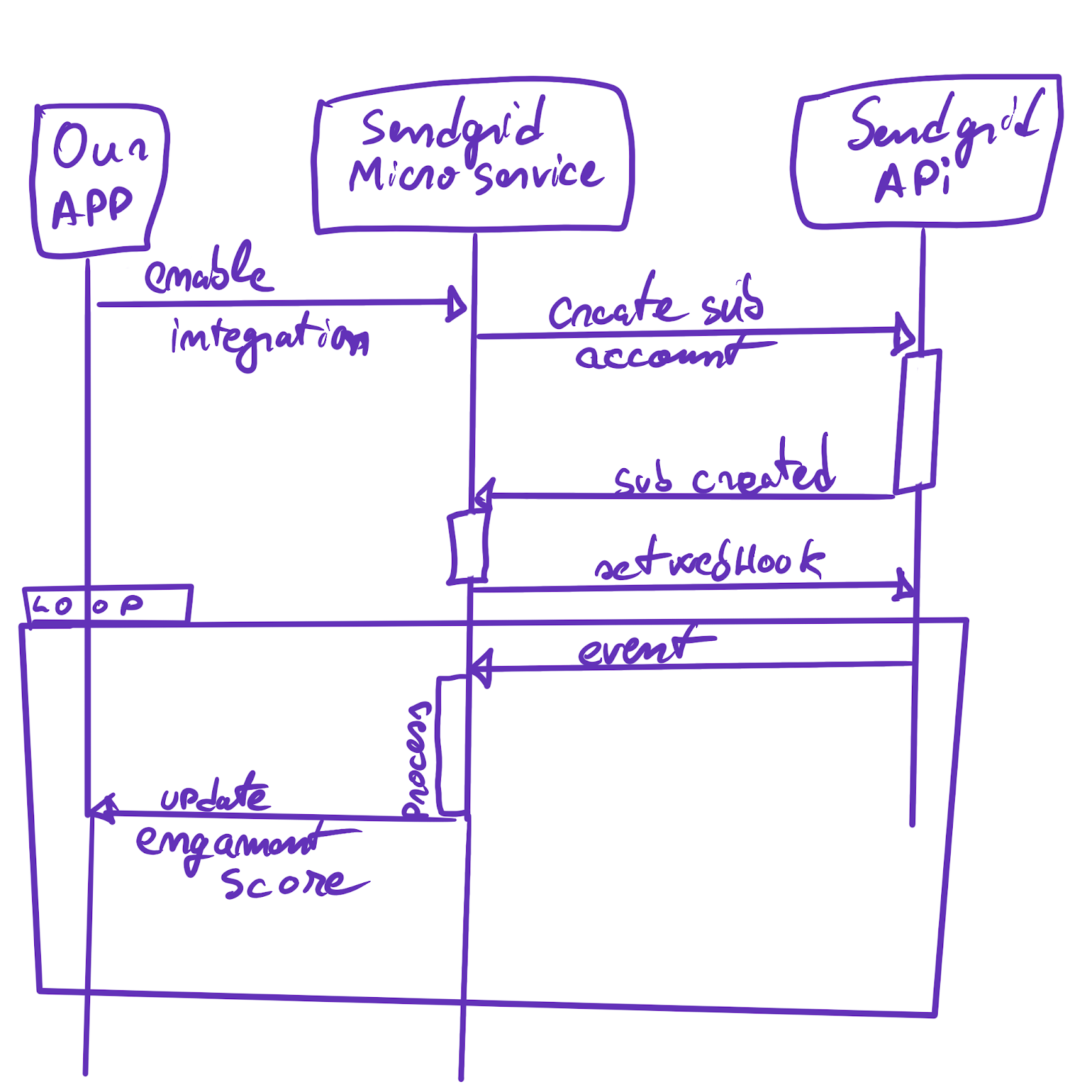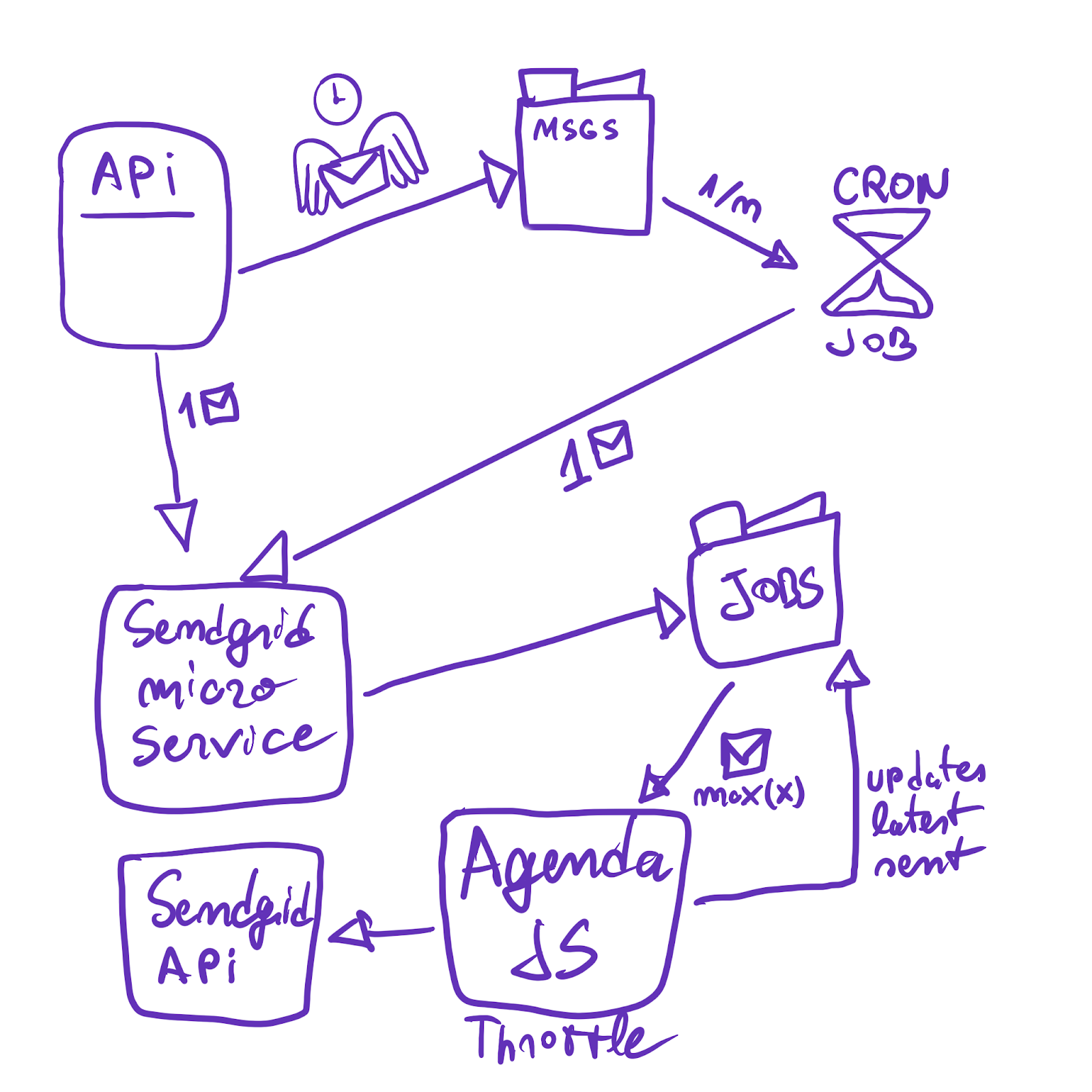How to Nail Your Marketing Campaigns
A Technical Perspective
By Razvan Lucacel May 19, 2025
Why Email Deliverability Still Matters in 2025
In a world where marketing has evolved to embrace video, AI-generated content, and hyper-targeted social ads, email still stands tall as one of the most cost-effective, ROI-rich communication tools in a company’s arsenal. But crafting a clever subject line or designing a stunning HTML template isn’t enough. Your message needs to land in your recipient’s inbox — not the spam folder. And that’s where email deliverability takes center stage.
Deliverability is an often invisible, misunderstood force. At Tapptitude, as we scaled marketing for multiple agencies via our case study CRM, we faced this challenge head-on. We knew that if our emails didn’t get seen, everything downstream — open rates, click-throughs, lead conversions — would fall flat. So, we designed a bulletproof system around SendGrid, carefully layering in technical best practices to help our customers’ marketing campaigns truly shine.
The Invisible Gatekeepers
How ISPs and Mailbox Providers Filter Your Emails
Every email passes through a series of invisible gatekeepers: spam filters, sender reputation checkers, domain authentication validators. ISPs like Gmail, Yahoo, and Outlook score every incoming message on multiple signals — how clean your email list is, how many people engage with your emails, and whether you’ve been flagged for spam in the past.
It’s a nuanced, dynamic system. Even small missteps — like sending too many emails at once or forgetting to remove inactive contacts — can tip the scales. That’s why technical control matters as much as creative flair in email marketing.
SendGrid as a Deliverability Backbone
Why We Chose It
When evaluating delivery platforms, SendGrid stood out for one simple reason: its flexibility. It allows deep, programmatic control over everything from subuser management to IP pool assignment and webhook-driven engagement scoring. For a multi-agency CRM like ours, this was critical.
We designed our architecture around SendGrid’s master account model with isolated subusers per agency. This meant every agency had its own domain, IP settings, and deliverability data — cleanly separated and independently optimized.
Cleaning House: Email Address Hygiene & Engagement Scoring
The first step to deliverability bliss is maintaining a clean, healthy email list. Here’s how we built it:
- Real-time engagement tracking using SendGrid Event Webhooks. Every open, click, bounce, unsubscribe, and spam complaint was logged and tied to individual contacts.
- Engagement scoring applied a rolling 90-day window. Recent activity earned points; inactivity caused scores to decay.
- Leads with zero activity after 90 days were either re-engaged or suppressed, improving open rates and ISP trust signals.
- High-performing contacts were promoted to priority marketing lists.
By consistently removing cold or hostile addresses, we protected sender reputation and ensured our emails reached genuinely interested recipients.

After enabling the sendgrid integration we set up for your sendgrid subaccount a webhook. For each email you send we add the account information there and when a webhook fires for that account we update the engagement score for that specific lead email address.
Smart Throttling: Why You Shouldn’t Blast Everyone at Once
Sending 10,000 emails at once is a recipe for deliverability disaster. ISPs might throttle, defer, or block your messages altogether. Our solution? Dynamic rate limits per agency, based on engagement tier:
- Good Senders: High engagement, low complaints — faster send rates.
- Average Senders: Moderate performance — steady pacing.
- New or Poor Senders: Strict limits, with ramp-up protocols.
New agencies start with a warming phase and gradually scale their send volumes based on track record. If a sender’s stats decline, throttling kicks in automatically, avoiding potential blacklisting.
In our CRM we have multiple ways of sending messages, bulk, scheduled, bulked-scheduled so we needed an implementation that will keep the current flow, will require minimal changes and almost no refactorings. Before the sendgrid micro service called the Sendgrid Api directly to send messages. Now we use agenda job handlers to throttle the messages as the microservice now instead of sending them directly it creates jobs. These jobs are stored and agenda job handlers process the maximum number of jobs per agency as described above, the new coming jobs are scheduled from the last unsent job.

IP Pool Management: Protecting Reputation Like a Pro
Dedicated IP addresses are reputation assets. Bad senders on your IP can taint your entire operation. We created three SendGrid IP pools:
- Warming Pool: For new senders.
- Default Pool: For moderate performers.
- Trusted Pool: Reserved for proven senders with top-tier engagement.
A daily job reviews each agency’s performance, dynamically moving them between pools based on live engagement and reputation scores. New IPs are blended with trusted ones for safer warm-ups.
Keeping Tabs: Reputation Monitoring and Automated Enforcement
SendGrid provides a Sender Reputation Score (0–100) and an Engagement Quality (SEQ) Score per subuser. We built a monitoring service that watches these stats in real-time:
- Drop below 80? A warning.
- Below 60? Auto-throttling or pause.
- Spam complaints over 0.3%? Immediate intervention.
Alerts notify both internal support and agency managers. If an agency slips up, we automatically demote them to a lower IP pool or hold their campaigns until the issue’s resolved.
The Security Backbone: Domain Authentication and Compliance
Every agency gets a verified sending domain with SPF/DKIM alignment. Our onboarding flow ensures no email is sent until DNS authentication is confirmed. The system blocks unauthenticated senders by default.
Compliance is baked in:
- Unsubscribe links in every message.
- Accurate sender identity.
- CAN-SPAM compliant footers.
The result? Emails show up with clean authentication headers, avoiding the dreaded “via sendgrid.net” tag.
UX Considerations: Giving Marketing Teams Transparency and Control
Great deliverability tech is only valuable if marketers can see it working. We surfaced actionable insights in our CRM:
- Reputation scores displayed as traffic light indicators on contacts.
- Engagement tiers that trigger workflow filters (e.g. only send to Green/Yellow).
- Customizable domain authentication screens with live DNS check results.
- Alert emails for high complaint or bounce rates.
We also considered allowing agencies to plug in their own SendGrid API keys — future-proofing for teams with strict data governance needs.
Conclusion: Deliverability Done Right
Email marketing is one of the most powerful tools at your disposal — but only if your emails actually reach people. By combining proactive engagement scoring, smart throttling, strict IP management, domain authentication, real-time analytics, and airtight security, you can master deliverability and get your message heard.
At Tapptitude, we believe a good marketing platform doesn’t just send emails; it protects your sender reputation, amplifies your best campaigns, and quietly defends against mistakes before they become disasters. If you’re serious about your campaigns, it’s time to get serious about deliverability too.
FAQs
1. What is SendGrid engagement scoring and why does it matter?
It’s a points-based system measuring how contacts interact with your emails. Higher engagement scores mean better inbox placement. SendGrid engagement scoring boosts deliverability by focusing your emails on active, interested recipients.
2. How do IP pools improve deliverability?
They segregate senders based on reputation, ensuring high-quality traffic isn’t harmed by poor-performing campaigns. New senders start in a warming pool before graduating to trusted pools as their reputation improves.
3. How does SendGrid handle bounces and complaints?
SendGrid’s webhook instantly flags bounces and spam complaints, placing them on suppression lists and excluding them from future campaigns. Our system mirrors these actions for added control.
4. Why is domain authentication so critical?
Without DKIM and SPF alignment, your emails are likely to land in spam or display confusing “via sendgrid.net” tags. Authentication builds trust with ISPs, improves deliverability, and enforces your brand identity.
5. Can agencies customize their deliverability settings?
Yes — via our CRM interface, agencies can manage their domains, monitor deliverability stats, and soon, bring their own SendGrid API keys for even tighter integration.
6. Could you switch to another email provider later?
Absolutely. While optimized for SendGrid now, the system’s modular architecture makes swapping ESPs feasible in the future without a complete rebuild.
📚 Bibliography
- Twilio SendGrid Docs. API Reference & Deliverability Guides.
Retrieved from: https://www.twilio.com/docs/sendgrid
2. SendGrid Engagement Quality (SEQ) API Documentation.
Retrieved from: https://www.twilio.com/docs/sendgrid/api-reference/sendgrid-engagement-quality-api
3. SendGrid Event Webhook Security Features.
Retrieved from: https://www.twilio.com/docs/sendgrid/for-developers/tracking-events/getting-started-event-webhook-security-features
4. SendGrid IP Warmup & IP Pools Guides.
Retrieved from: https://www.twilio.com/docs/sendgrid/api-reference/ip-warmup
and https://www.twilio.com/docs/sendgrid/api-reference/ip-pools
Tapptitude
Product studio
Tapptitude is a mobile app development company specialized in providing high-quality mobile app development services, and a top-rated app company on Clutch.















